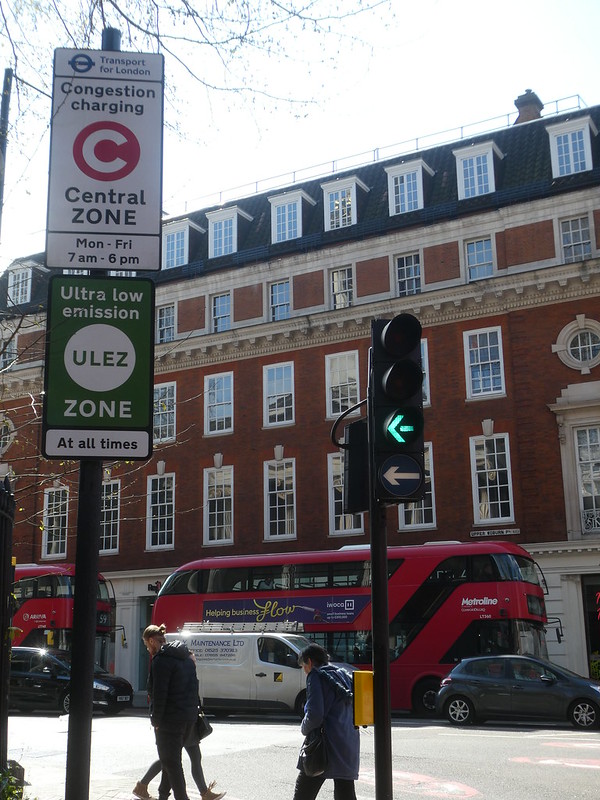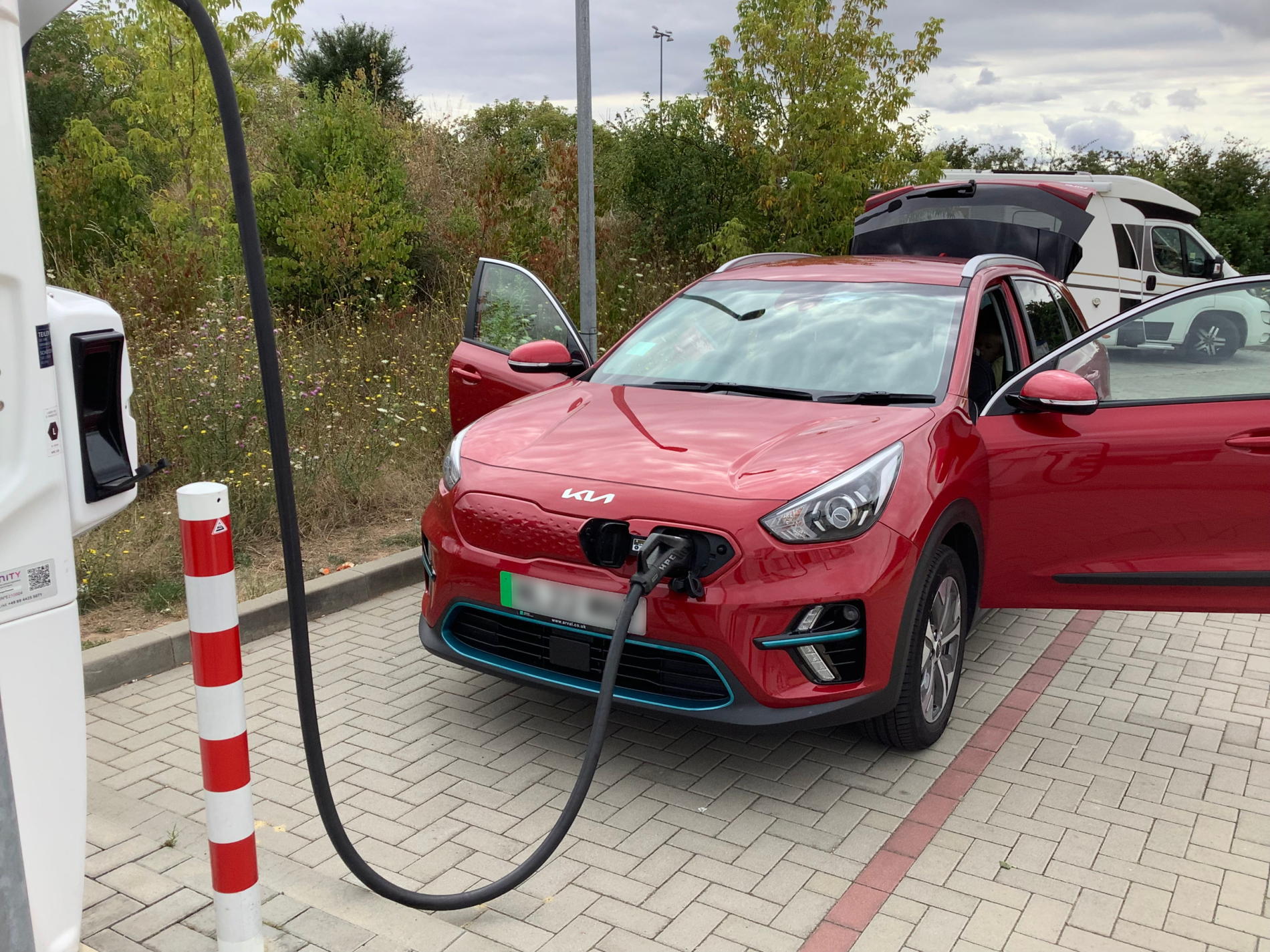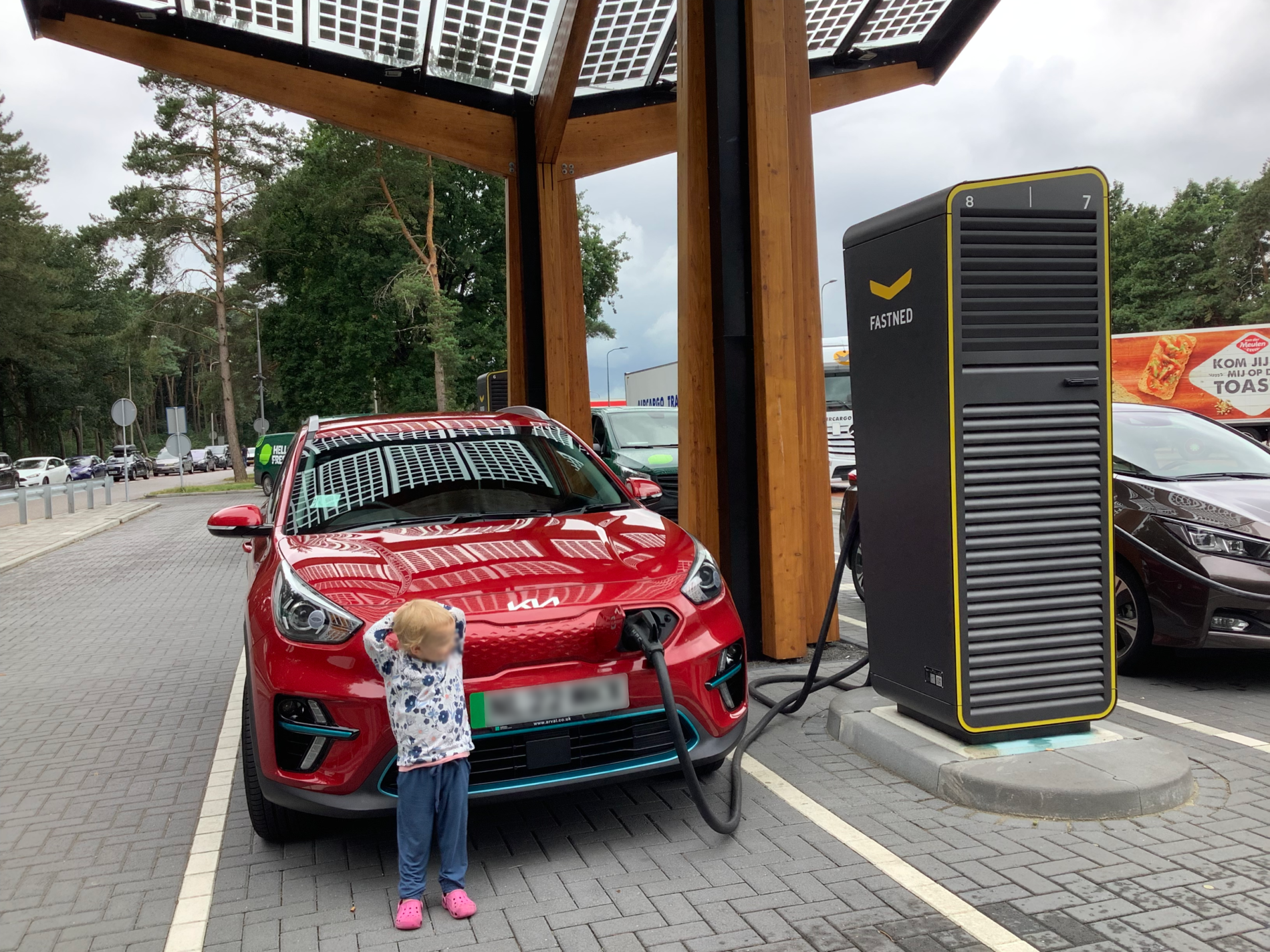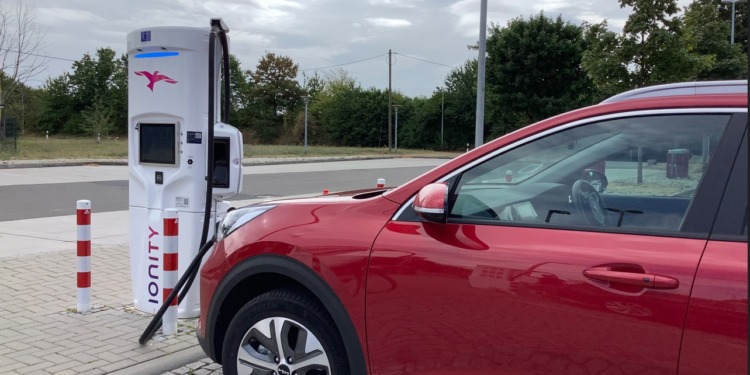At the end of 2021, our family ditched a diesel car for an electric one. The mayor of London was the force behind our decision when he announced that from October 2021 an Ultra-Low Emission Zone (ULEZ), would be expanding from central London as far as North and South Circular (literally 500 yards from where we live).

At first, we rented an electric car before our own Kia e-Niro arrived in March of 2022. Looking back, I’m really glad we made that switch; with the petrol prices going through the roof, an electric car seems like not only a better environmental solution but also a more affordable option at the moment. Since the Russian invasion of Ukraine began, which triggered the spike in petrol prices, the demand for electric cars has gone up significantly.
Can driving an electric car across Europe be as seamless as driving a Diesel?
England
Every summer when the school year ends in England (which is usually rather late compared to other European countries), we pack up and drive to Poland, to spend those few short weeks of freedom with family and friends and away from the hustle and bustle of a mega city. This year wasn’t going to be any different.
When our Kia is fully charged, we can drive for about 250-300 miles without having to plug in again. Luckily, the charging stations are frequent across London. The nearest point for us is just five minutes drive away from our apartment. The purposely built station is located next to the health centre and has eight charging points.
We never had to wait there for the spot to be available. However, if needed, in a proximity of 2 miles we have another two newly built large charging stations.
Unfortunately, at times, a petrol or diesel car user uses the spaces as their parking spots and there is currently no authority to report them. I hope that this will change in the very near future.
Most of the petrol stations across London also have charging points now and their numbers are increasing rapidly, at least in our Royal Borough of Greenwich. However, the charging pods at petrol stations don’t always work seamlessly and at times there are long queues, especially in areas without many charging points available.
Back to our journey, as every year we left early in the morning with a full tank, erm, a battery fully charged.
By the time we got to Folkestone, we were down by about 30%.
The Eurotunnel parking terminal had several Tesla charges and even though in theory, the charging cable is the same as for our Kia we couldn’t connect to those. Actually, something my husband was surprised about and annoyed with, as he did quite extensive research beforehand.
Fortunately, the terminal had a couple of non-Tesla charges, which we connected to with ease. That allowed us to charge for about 30 minutes before we had to board the train. The charging was also free of charge, so happy days.
A suggestion to Eurotunnel: I don’t know how technically possible that could be but perhaps at some point Eurotunnel would be able to introduce charging points inside the trains. The customers could request space on the train next to such a charger, which would further cut down on the travel time for electric car users.

Europe
Since we were almost fully charged when we boarded the train, we didn’t have to stop either in France or in Belgium.
The initial plan was to charge again only in Germany. But since we had to stop in the Netherlands, the petrol station we stopped at had neat rapid charging pods, so we took advantage of those. It took us about 80 minutes to have our Kia fully charged.
You may think that over an hour is way too long to wait for charging to be completed, but when traveling long distances, it’s not really that long. Even if we still had a diesel car, we would have had to stop, buy petrol, stretch a bit, have lunch, etc.
All of that would also take time, probably about half of 80 mins, so the actual “sacrifice” is not really that big. The Dutch charging station was effortless and even the local delivery fleet was using the station, which could become an issue when more electric cars drive across the European highways.
Our next charging stop was in Germany in the small town of Volkmarsen, where we stayed overnight. The town had two slow chargers on the main square, which is equivalent to the centre of the town.
Initially, my husband had a bit of an issue getting connected to the app that would allow him to pay for the charging. He managed to get connected eventually, but in the meantime a very sweet German couple offered to pay for our charging for the duration of their own connection (about 60 – 90 mins), if he couldn’t connect, which was so super kind.
It appears that the European electric cars community is really kind and tight, even though we were just passers-by.
Since that was a slow charger and we didn’t want to block it overnight, we unplugged before we went to sleep, by which time we were up to 80%.
We left Volkmarsen in the morning with the original plan to charge one more time in Germany before crossing the Polish border.
Finding the charger and charging our car in Germany was easy.
Ah, an important point I forgot to mention: We were able to use the same app in Germany and the Netherlands that we use in the UK, and that was really convenient. Even, when we experienced minor issues, the contact with their support service was immediate and any issues were resolved on the spot.
The biggest issues we had with finding the charging stations were in Poland.
As of this writing, summer 2022, Poland doesn’t have as many chargers as there are in western Europe. Another issue is that there are lots of different providers, and for each provider a customer needs to download a new app to be able to connect to the payment system, which makes the whole experience a bit tedious.
However, companies are reportedly building and expanding the charging network. Hopefully in the process the payment system will also become more consolidated.
In summary, the journey with an electric car across Europe, from London, England to Wroclaw, Poland (about 850 miles) in July of 2022 cost us £80 (€95) instead of about £180 (€215), if we had used a diesel or a petrol car.
Driving an Electric Car in Poland
I didn’t see any off-street fast charging stations in Wroclaw, but it doesn’t mean that there are none. However, it seems that the trend is to locate the charging stations either at petrol stations or in shopping malls. We did see a couple off-street charging stations in Warsaw, but those were the slow ones. That meant the car would have had to be left overnight to fully charge.
Even though there were no off-street charging stations in our neighbourhood (Wroclaw-Srodmiescie), Wroclaw was still pretty accessible for electric cars.
Just like in London, we were able to park across Poland for free. Wroclaw also has designated electric cars parking spaces everywhere in the city, which makes finding the parking spot in the notoriously overcrowded city centre much easier.
We didn’t stay in Wroclaw for too long before driving to my parents, who currently live in Kujawsko-Pomorskie near Torun. On the 400 km drive there we stopped to charge for half an hour, up to just over 80%. We hoped to fully charge at my parent’s house but since we didn’t have the right cable that wasn’t possible.
Kujawsko-Pomorskie isn’t as electric car friendly as Wroclaw and finding a charger was tricky. We managed to find one 20 km away from my parents’ house. It wasn’t the fastest one but within 2,5 hours the battery was back at 100% from initially 10%. Because of the charging speed, the charging took an hour longer than usual.

Conclusion: Driving an electric car was far cheaper and no more challenging than a diesel or petrol car
Driving an electric car across Europe wasn’t really any different than driving a diesel or petrol car and the travel cost was decidedly lower, less than half.
I sincerely hope that the infrastructure across Europe will keep growing as needed to accommodate customers’ demand, but that doesn’t only mean adding more charging stations.
Consider that if every car requires up to 90 minutes to recharge, that will require not only space for kids to play outside while the car is charging, but also a place for the travellers to rest, eat and use toilets.
In short, electric charging pods should become fully equipped stations or attached to existing stations so that the same services are provided as they are for diesel or petrol car drivers.
Also, an effort should be made to invest in fast and rapid chargers. As shown by the following charging times we noted for recharging our Kia e-Niro battery (64kWh), the time it takes a slow charger to fully recharge an electric car is extremely inconvenient, about 10 hours:
- Rapid chargers – 10% – 80% – 30-35 mins; 10% – 100% – about 80 mins
- Fast chargers – 10% – 80% – 45-50 mins; 10% – 100% – about 95 mins
- Slow chargers – 10% – 80% – about 6-7 hrs; 10% – 100% – about 10 hrs
Europe is on the right path to achieve net zero emissions by 2050, despite some European governments not believing in the climate emergency or individuals saying that the electric car revolution will pollute the environment more than fossil fuels industry does because of the problems with sourcing raw materials and batteries.
As for us, we’ll keep using our electric car, while driving across Europe or in any city we end up living in. Until there is another better solution to our traveling needs.
Editor’s Note: The opinions expressed here by the authors are their own, not those of Impakter.com — In the Featured Photo: Sign for electric car station. All photos by the author unless otherwise indicated.










